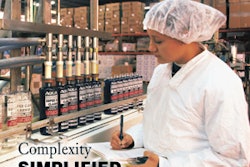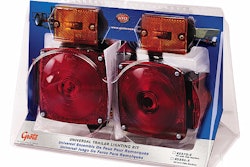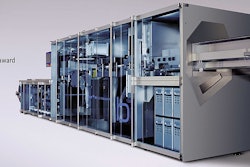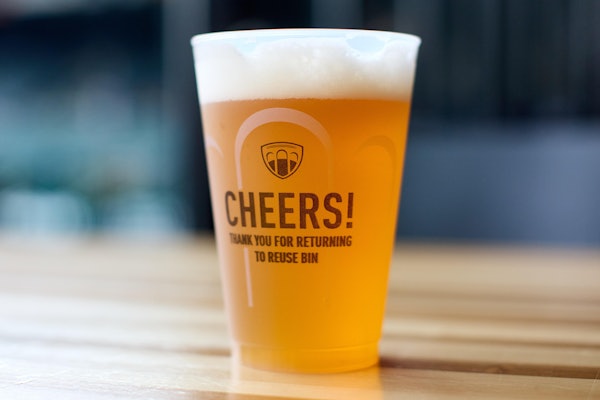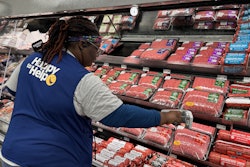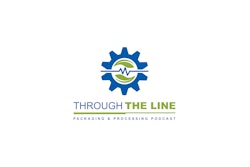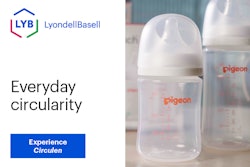When Lauren Perez picked up the phone at her desk in Florida, her mother’s voice jumped through the line. Mom was shopping in New York City’s Chinatown and had just purchased an exquisite handbag from a street vendor, for an exquisite price.
“Can you believe it,” said the excited, bargain-hunting elder Perez. “And for an additional $10 they will put a Prada tag on it.”
The younger Perez volunteered that anecdote when asked about a bill that passed the House in May and is now sitting in the Senate Judiciary Committee. Called the Stop Counterfeiting in Manufactured Goods Act (H.R. 32), it is that rare piece of congressional legislation that focuses almost exclusively on product packaging and labels.
Its intent is to expand the criminal law so that federal prosecutors will have an easier time going after counterfeiters that manufacture bogus product labels and packaging, like the Prada tags the elder Perez was offered in Chinatown. The bill, for the first time, defines counterfeit labels and packaging as targets of the criminal law, and also allows federal prosecutors to force counterfeiters, again for the first time, to give up the packaging and labeling equipment they used in their crimes.
Becoming high-profile issue
Counterfeiting, especially by Chinese firms, is an increasingly high profile issue on Capitol Hill; and, in a recent twist, the focus has been more on counterfeit labels and packaging than on the counterfeit product itself.
David Pearl, II, executive vice president of Uniweld Products, Inc., Ft. Lauderdale, Florida, says Chinese counterfeits have cost the company $1 million a year in lost sales in Saudi Arabia, one of the markets for the automobile manifolds the company markets. “The instruction sheets we provide with our product are copied with our name, address and telephone numbers, and the packaging even carries the American flag that we put on our own box,” Pearl explains. “The product and the packaging are copied to a ‘T’.”
James Christian, vice president and head of global corporate security for pharmaceutical maker Novartis International AG, Basel, Switzerland, states that counterfeiters are so sophisticated that they “can also make and stamp tablets with company logos and put them in special packaging such as blister packs.”
Measuring problem isn’t easy
Getting a fix on the extent of the counterfeit labels and packaging problem isn’t easy, though. Ron Schultz, president and chief executive officer of RBS Technologies, says his customers wouldn’t want to talk about problems they have had with counterfeit labels and packages. RBS provides in-mold labeling, which can help alert legitimate companies in the distribution chain to a counterfeit package.
But in-mold labeling does little to dissuade consumers who would not know how to identify a product with an in-mold label. Some might not care they are buying a counterfeited product anyway if they can pass it off, via a counterfeit label, as the real thing.
Perez has a keen interest in H.R. 32 because she is vice president, regulatory matters for the American Free Trade Assn., a group that represents distributors and importers of secondary market goods or “grey market” products. Perez testified to a House subcommittee in March on the legislation, which was amended with a “repackaging exclusion” so that legitimate secondary market products—which bypass a manufacturer’s distributor—are unaffected by the bill’s reach.
The bill instead aims to inhibit the sale of counterfeit goods from countries such as China, the biggest, but by no means the only, country whose companies infringe American intellectual property laws.
Seizures way up
The House Judiciary Committee report on H.R. 32 cites a mid-year 2003 report from the Department of Homeland Security (DHS) that reported 3걕 seizures of counterfeit branded goods including cigarettes, books, apparel, handbags, toys and electronic games with an estimated street value of about $38 million—up 42% from 2002.
The top five offending countries of origin were the People’s Republic of China ($26.7 million), Hong Kong ($1.9 million), Mexico ($1.6 million), South Korea, ($1.4 million) and Malaysia ($1 million).
The report did not break out figures for labels and packaging. The Justice Department has prosecuted isolated cases over the years with its current criminal authority. On February 13, 2003, a California man, Mohsin Mynaf, was sentenced in the Eastern federal district court in California to 24 months in federal prison in part for producing counterfeit labels for counterfeited videocassettes.
Counterfeited products, which heretofore have been a back-bench issue for years, both in Congress and with the Justice Department, are fast becoming a cause celebre on Capitol Hill. At Senate Finance Committee hearings on June 24, senators gave an earful to Federal Reserve Bank chairman Alan Greenspan and Treasury Secretary John Snow about Chinese trade policies, including its rising tide of counterfeited products.
Another step
The notion of giving the Justice Department additional criminal authority to go after counterfeiters of labels and packaging for manufactured goods follows congressional action last year related to software and DVDs. The Anti-Counterfeiting Amendments Act signed by President Bush in December 2004 was aimed at stopping counterfeiters from separating genuine certificate of authenticity (COA) labels from genuine software, and then selling those labels so they could be attached to counterfeited software.
Although the bill focused on stopping traffic in legitimate labels, it nonetheless reflected a shift in strategy to go after the labels, and not just the products themselves. H.R. 32 passed the House in late May by a voice vote. So it wasn’t controversial in the House.
But Perez of the AFTA says she has heard that “some parties,” whom she couldn’t identify, were unhappy with the equipment forfeiture provisions of H.R. 32. “We understand the Senate wants to produce its own version of that bill,” she explains.
How soon that will happen is anyone’s guess. The committee will be preoccupied in the near term with hearings on a replacement for retiring Supreme Court Justice Sandra Day O’Connor.



